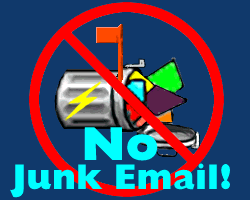
This is an issue that will affect most if not all of us, and so we should take the time to learn the facts. Dito na po tayo nakatira sa Amerika kaya dapat lang na sumali tayo at pag-aralan ang anumang bagay na makakaapekto sa buhay natin dito.
As you (should) know, President Barack Obama’s endorsed healthcare reform bill include extending insurance to all Americans - but there will be no health insurance Federal aid to undocumented immigrants. ERs will still be obligated to treat all patients, including TNTs - this is not a new procedure. That system has been in place in previous administrations. It's a legal (and moral) obligation of U.S. hospitals and their staff.
Here are some basic info about the healthcare issue from Newsday.
Question: Where do most people in America get their insurance now?
Answer: An estimated 253.4 million people had coverage in 2007, according to the most recent analysis by the U.S. Census Bureau. The majority of those had private insurance, most of it obtained through an employer. Eighty-three million people got health insurance from the government through Medicare, Medicaid or some other program such as the Veterans Health Administration.
Q: How many people don’t have coverage?
A: The Census Bureau estimated that 45.7 million people in the country under age 65 did not have insurance in 2007. (Most discussions focus on those under 65 because senior citizens have access to Medicare.)
Many experts believe that the number of uninsured is higher now, perhaps more than 47 million, because so many people have lost coverage in the economic downtown. Even more people may go without coverage for a time as a result of changing jobs, leaving school or some other event. An analysis by the consumer group Families USA estimated that about 64.5 million people were uninsured for at least six months in 2007 and 2008. The majority of the uninsured, more than eight in 10, are in working families.
Q: Can any of the uninsured afford coverage?
A: Probably. Many younger people and healthy people choose not to get coverage. Some 4.5 million of the uninsured make at least four times the federal poverty level — or $43,320 a year for an individual and $88,200 for a family of four — according to an analysis by the Kaiser Commission on Medicaid and the Uninsured and the Urban Institute. The analysis estimated that 15 million of the uninsured are below the federal poverty line of $10,830 for an individual and $22,050 for a family of four.
Q: Couldn’t those people qualify for government assistance?
A: Many probably could. One of the challenges that has confounded policymakers is how to get more poor people to sign up for aid. Congressional Democrats pushing health care legislation want to expand eligibility for Medicaid — the federal-state health insurance program for the poor — and ramp up outreach efforts.
Q: How many of the uninsured are undocumented immigrants?
A: As many as 7 million. An additional 3 million are legal immigrants, according to the U.S. Census.
Q: Will all of the people without insurance be covered under plans being developed in Congress?
A: Not all of them. The bills written by senior House Democrats and by the Senate health committee would explicitly prohibit undocumented immigrants from getting federal aid for health insurance. Although all the major proposals would require everyone to get health insurance, millions of people are expected to not sign up.
Under the House bill, the percentage of people with coverage (excluding undocumented immigrants) is expected to go from about 83 percent in 2010 to 97 percent in 2019, according to the nonpartisan Congressional Budget Office, which is charged with analyzing the cost and impact of proposed legislation. The Senate health bill would boost the coverage rate to 90 percent.
Q: Where will people be getting their health insurance if the bill succeeds?
A: The CBO estimated that in 10 years, most Americans under 65 will get private insurance though their employers. In fact, the number of people with employer-based coverage is expected to grow.
As many as 30 million people would get their insurance through exchanges created by the legislation. These new, highly regulated marketplaces would offer people a choice of health plans provided by private insurers and the government. Of those in the exchanges, fewer than 11 million are expected to get their insurance from the government plan, according to CBO.
[photo: baltimoresun.com]












.jpg)
